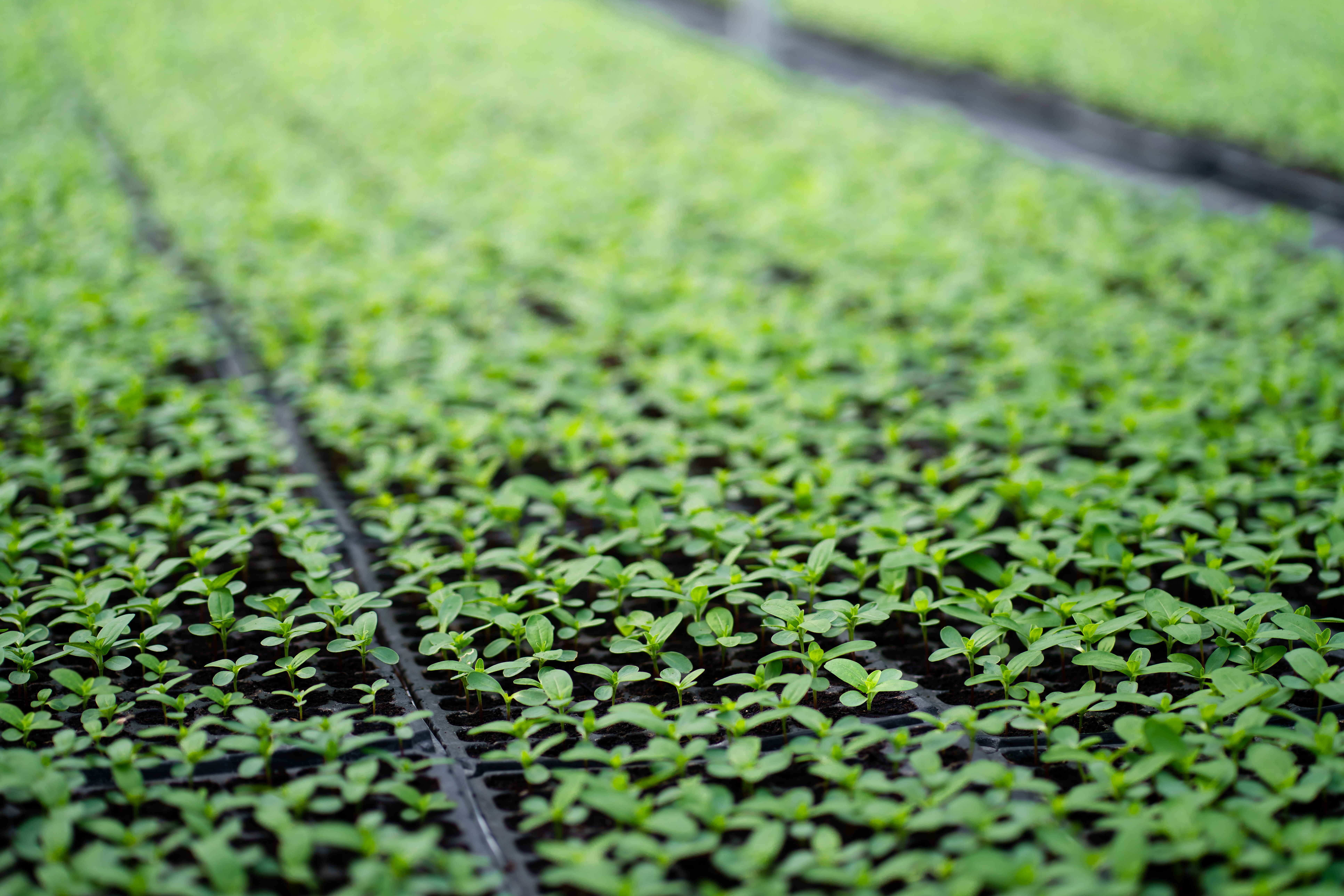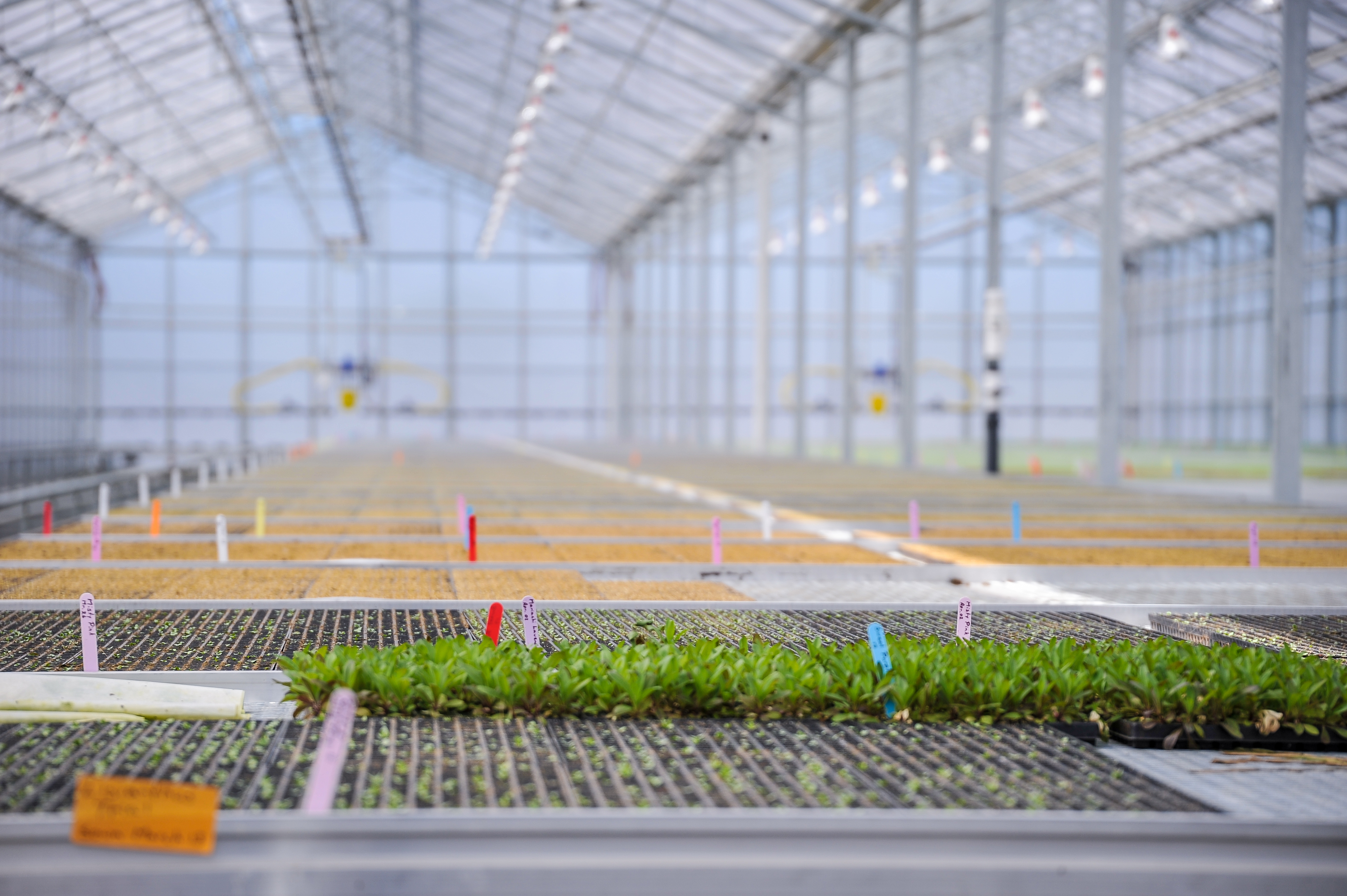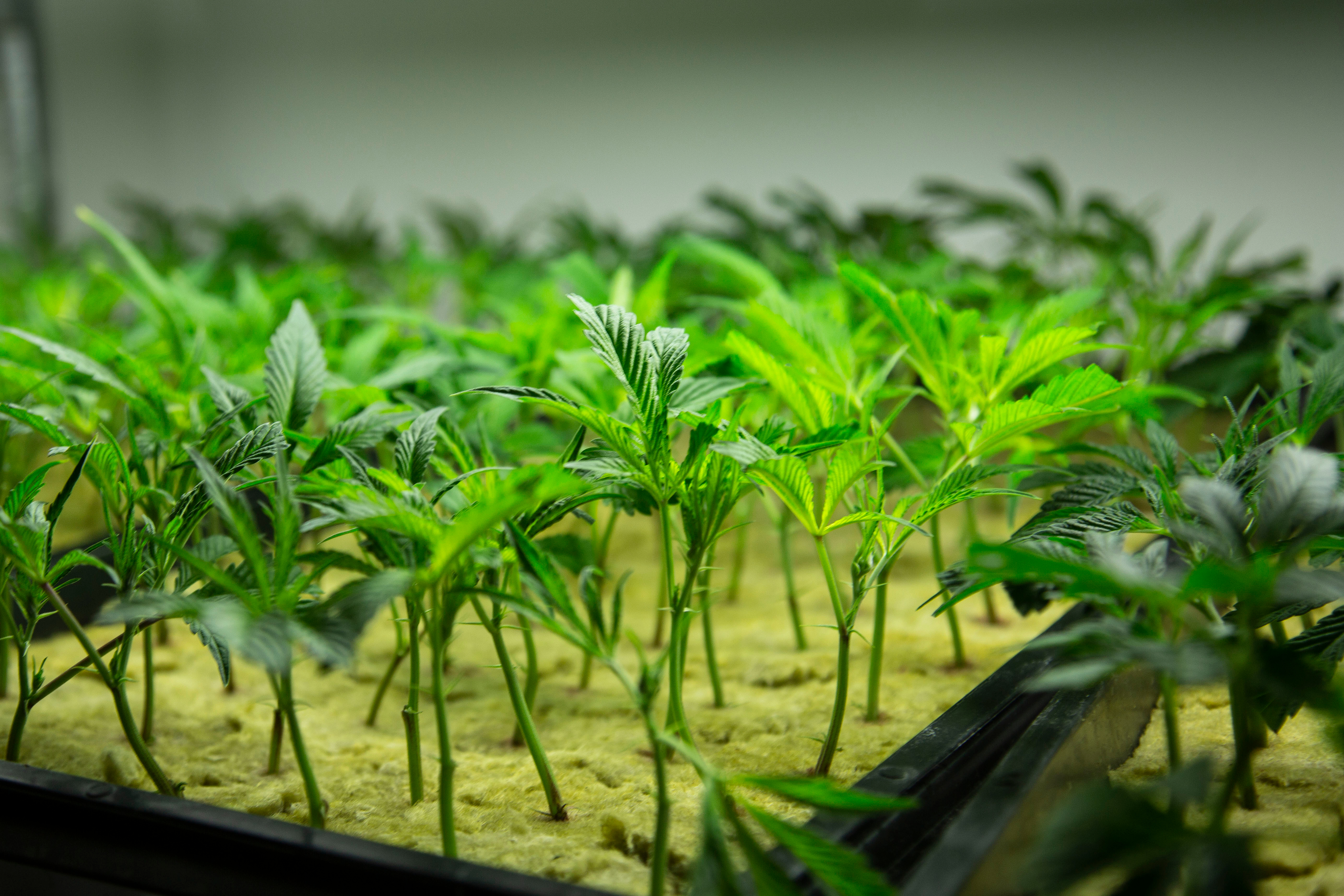Lighting for Young Plants: Seedlings and Cuttings
A plant’s growing cycle is shaped during the early vegetative stages of growth and these early stages will directly influence the rest of the plant’s life cycle. One way to build a strong foundation, is to provide appropriate lighting during these critical stages. The goal of growing plugs is to have compact, uniform plants with a well-developed root system. Utilizing supplemental lighting during the propagation phase allows for more predictable and faster crop cycles, while improving overall quality and root structure. In addition, air temperature – and especially medium temperature – are important because temperature controls the rate of callus and root development. In this article we will explore the basics behind cutting and seedling production in relation to light.

Seedlings
For the most part, many young plants are started in the winter months in order to be ready for spring – meaning you often deal with limited light intensity and duration. Making sure seedlings are getting the recommended amount of light is essential to growing quality plants with well developed root systems. The benefits of adding supplemental lighting to young plants include improved branching, thicker stems, increased rooting, more rapid growth and more compact size. Supplemental lighting influences plant growth by increasing the daily light integral (DLI) and therefore photosynthesis. DLI is the amount of photosynthetic light delivered to plants each day. It is expressed as moles of light per square meter per day and is a function of light intensity and duration. PPFD (Photosynthetic Photon Flux Density) is another way to measure light intensity and is a reading of the instantaneous light level being delivered to the crop canopy at a certain time and is measured in micromoles per meter squared per second (µmol/m2/s¹).
In addition, the heat emitted from luminaires helps increase the plant and media temperature, hastening development.
Stages for seeds:
There are four stages to plug production:
- Radicle (root) emergence
- Cotyledon spread
- Unfolding of three to four leaves
- Finished plug with more than 4 expanded leaves
Germination of seeds requires either dark or light conditions and some may also require vernalization before germination can occur. Researchers have found that red light is most effective at breaking photodormancy in light dependent seed crops. If dark conditions are required for germination, it can be achieved by covering seeds with a fine layer of growing substrate, covering with a plastic film or simply turning the lights off. During propagation, light should be managed based on the instantaneous intensity (PPFD), but we can also consider DLI, as research has shown that rooting of some crops can be delayed when the DLI is below 4 or 5 mol/day.
For seedlings, a DLI of 8-12 mol/m2/d1 or PPFD of 100-300 µmol/m2/s¹ is recommended as a minimum for quality plug production. Researchers have found that even if you are not able to supply supplemental lighting to your plants during the first stages of development, adding it in stages 3 and 4 will still help to increase the quality, shoot mass, root development, number of leaves and flowers. As plants move into stage 4, the light levels can further be increased to 500-800 µmol/m2/s¹, or a DLI of 12+ mol/day depending on what you are growing.

It’s been found that plant responses to supplemental lighting is higher in winter months than in spring due to winter having a much lower naturally occurring DLI. This is because DLI follows the law of diminishing returns and as DLI continues to increase, it has less of an affect on flowering time and development. For example, a change in DLI from 7 to 11mol/m2/d1 will see a more pronounced difference than going from 12 to 16mol/m2/d1. It should be noted that all plant species respond differently to light intensity and while a higher light intensity will provide faster growth, some species will benefit from a lower DLI, while others a higher one. In addition, the supplemental lighting can also help to extend the photoperiod and early flowering can occur in long day flowering plants.
Cuttings
Adding supplemental lighting to cutting (clone) production can greatly increase the chances of a successful crop, along with faster root emergence and crop times. If the Daily Light Integral (DLI) is too low during propagation, leaves will be unable to get enough light for photosynthesis and rooting can be delayed. However, if light levels are too high, leaves can become bleached and leaf temperature and transpiration will increase which can hinder rooting.
There are four stages to cutting production:
- Cutting insertion into substrate
- Callus development
- Root development
- Preparation of rooted cutting for finishing/Further root and shoot development
Managing the environment is critical to growing well rooted cuttings, along with following good sanitary practices, to prevent the spread of insects, diseases and viruses. A good practice when receiving cuttings, is to use a preliminary dip to kill any harbouring insects such as thrips, mealybug or whitefly. Dips are usually a mixture of low-risk pesticides that include insecticidal soap, horticultural oil and/or BotaniGard, where plants are immersed in the solution to cover the whole plant and kill any pests.
It is also recommended to use a rooting hormone containing an auxin immediately before they are stuck, to increase the success rate and speed of root development. During the early stages of rooting, the humidity should be maintained quite high, around 90-100%. Depending on your setup, misters or foggers can be utilized to keep the air moist and humidity high to prevent plants from wilting or drying out. Providing bottom heat, or a media temperature between 22-24 degrees Celsius, will also help to speed up rooting.

Having appropriate light levels in your cutting production can help provide energy for callus development, along with the growth of adventitious roots. Light levels should be maintained low during the very early stages, at an instantaneous light intensity (PPFD) of 50-70 µmol/m2/s¹until roots develop. Shading should be used on bright days to avoid dehydrating the cuttings. Once roots have developed, the light intensity can be increased to a maximum of 100-300 µmol/m2/s¹ or 6-12 mol/m2/d. When roots have filled about half the liner, light intensity can be further increased to 150-500 µmol/m2/s¹ and have a DLI greater than 10-12 mol/m2/d1. This higher intensity helps acclimate plants to the post-propagation environment. Please keep in mind individual light levels will vary depending on plant species and natural outdoor light levels.
It’s important to note that light uniformity is very important at this stage in development as it can become difficult to manage plants of varying sizes and at different stages in development. When plants are ready for production, the PPFD can be further increased depending on what the desired PPFD and/or DLI is for your crop. Ensuring young plants are getting the right amount of light during the early stages of growth will make later transplant into the greenhouse environment faster and easier on your crops. At the same time, having more supplemental lighting can increase cuttings drying out, so having a misting program is important.

Conclusion:
As shown, supplemental lighting and light intensity play an important role during the propagation stages of production. Responses to DLI will differ among cultivars, with shade loving plants (in general) requiring less light than full sun plants. Propagation requires the proper balance between light, temperature, and humidity. Using supplemental lighting for plugs during low light intensity times of the year will see an increase in photosynthesis, faster flowering, increased root structure, stronger and sturdier plants and faster crop cycles.


